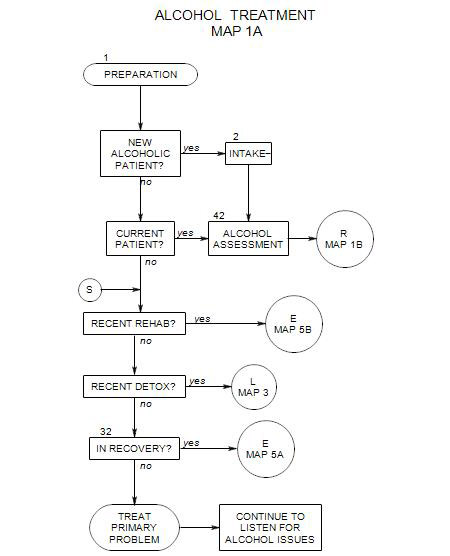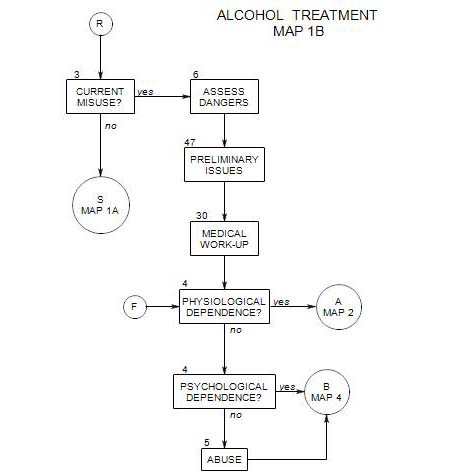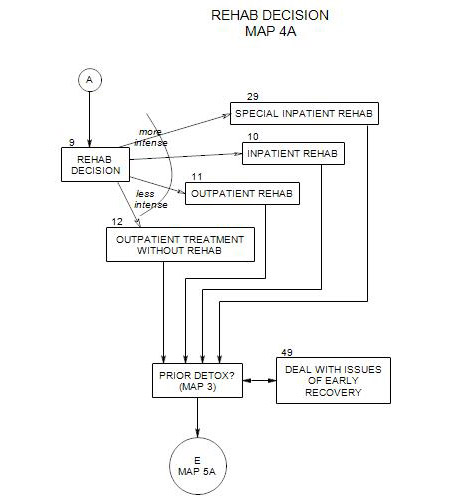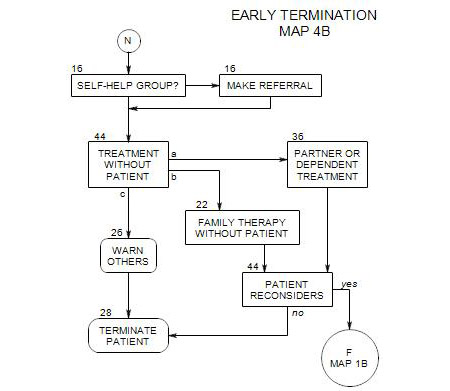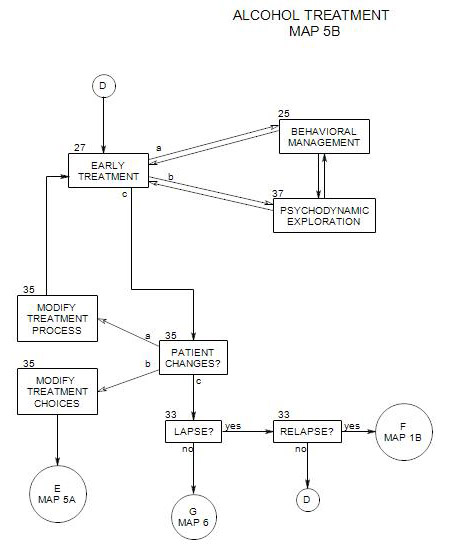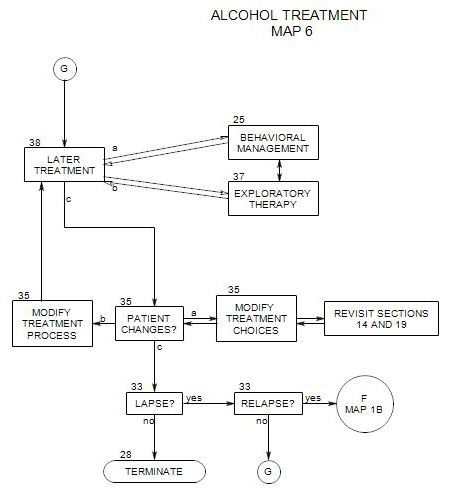- This section follows Section 13 on Map 2, for a patient who is known to be physiologically dependent.
When a person is physiologically addicted to alcohol but…
- …is unwilling to go for inpatient detoxification and
…has and prior detox attempts without complications, and
…you can’t have an intervention,
or
…he/she appears to be managing in spite of the addiction,
then you may be able to get him/her to agree to outpatient detox.
However, the procedure is inherently risky, because without adequate management the person can undermine the procedure or experience a complication without adequate backup and support from others. Any attempt should be managed by a professional with experience in this form of treatment.
The purpose is to help the person get past the physical component of his/her addiction, while at the same time minimizing the side effects that withdrawal can produce.
The procedure requires total abstinence and daily monitoring for withdrawal symptoms, which could range from mild to severe.
Medical support includes the use of multiple vitamins to replace losses from drinking and benzodiazepines to lighten symptoms. During this time, the person must be closely monitored. Alcohol and anxiolitics are both central nervous system depressants, and the drug substitutes in part for the alcohol during detox, reducing side effects. However, if the person continues to drink, the drug and alcohol can compound to create even more serious problems and possibly death.
Treatment can be carried out in a partial hospital setting or on an outpatient basis, depending on the severity of symptoms and the availability of others to monitor the patient and provide support.
Minor symptoms during detoxification include irritability, anxiety, trouble sleeping, shaking, nausea and vomiting. Physiological reactions include increased blood pressure and heart rate and high temperature.
More serious withdrawal symptoms can include delirium, hallucinations and seizures.
Patients should be warned that detoxification is only the first stage of the work, and that further treatment is necessary in order to prevent relapse. Ideally this consists of some form of rehabilitation followed by long-term psychotherapy.
